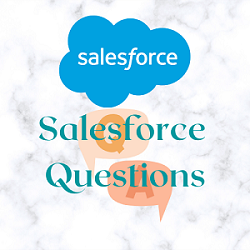1: Introduction to Lightning Web Components (LWC)
🌩️ Lightning Web Components (LWC) are a modern UI framework from @Salesforce for building dynamic web apps. Think of them as reusable building blocks that make your #Salesforce experience more awesome! Let's dive into the basics! #LWCBasics #SalesforceOhana
2: Key Features of LWC
🚀 LWC is lightweight, easy to use, and built on web standards like HTML, JavaScript, and CSS. It promotes a component-based architecture, making your code modular and maintainable. #LWCBasics
3: Component Structure
🔧 In LWC, a component is a reusable unit of code. It has three main files:
HTML for structure
JavaScript for functionality
CSS for styling
They work together to create a cohesive user interface. #LWCBasics
4: Data Binding in LWC
🔗 LWC supports one-way and two-way data binding, making it easy to manage the flow of data between components. Use decorators like @track to make properties reactive and update the UI. #LWCBasics
5: Lifecycle Hooks in LWC
⚙️ LWC components have a lifecycle with various hooks like connectedCallback, renderedCallback, and disconnectedCallback. These hooks allow you to perform actions at different stages of a component's life. #LWCBasics
6: Inter-Component Communication
🗣️ Components can communicate with each other using events in LWC. This enables a modular and loosely coupled architecture. One component can fire an event, and others can respond to it. #LWCBasics
7: Apex Integration in LWC
🌐 LWC can call server-side Apex controllers to interact with Salesforce data. This brings the power of server-side processing to your client-side components. #LWCBasics #SalesforceDevs
8: Security in LWC
🔒 LWC runs in a secure container called Locker Service. It helps prevent security vulnerabilities by isolating components and enforcing strict rules. Security first! #LWCBasics #SalesforceSecurity
9: Setting Up LWC
🔨 To start building Lightning web components, you need a Salesforce Developer Edition or a sandbox environment. Use tools like VS Code and Salesforce CLI for a smooth development experience. #LWCBasics #SalesforceDev
10: Resources to Learn More
📚 Ready to deep dive into LWC? Explore official @Salesforce docs, join the #SalesforceOhana community, and check out hands-on tutorials. Learning LWC is a journey, enjoy it! #LWCBasics #SalesforceTrailhead


0 Comments
Post a Comment